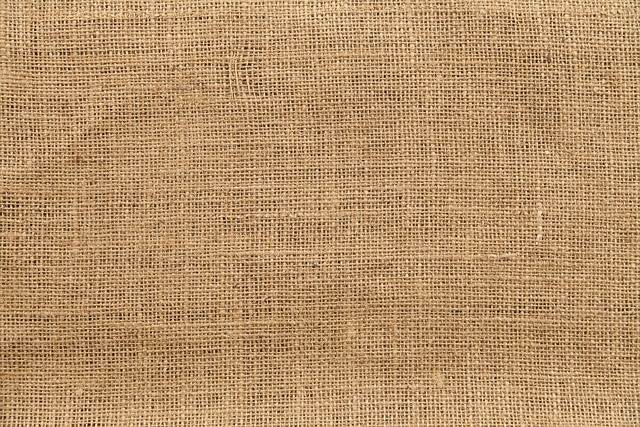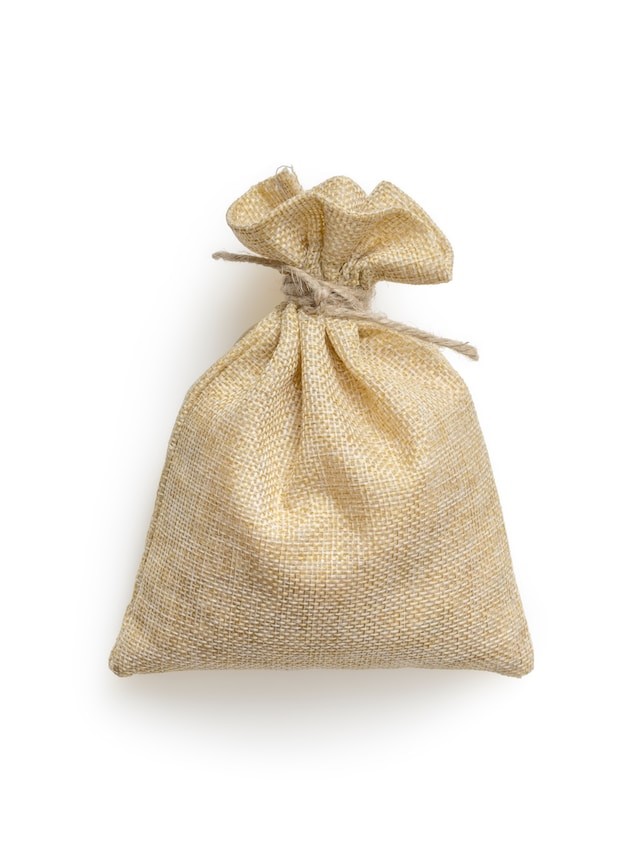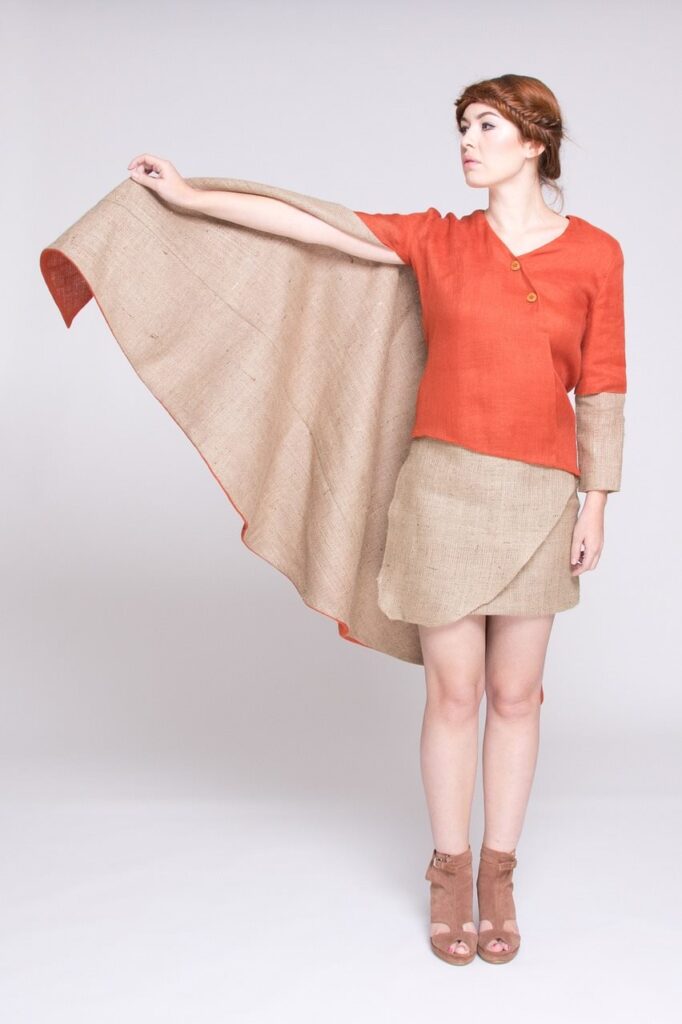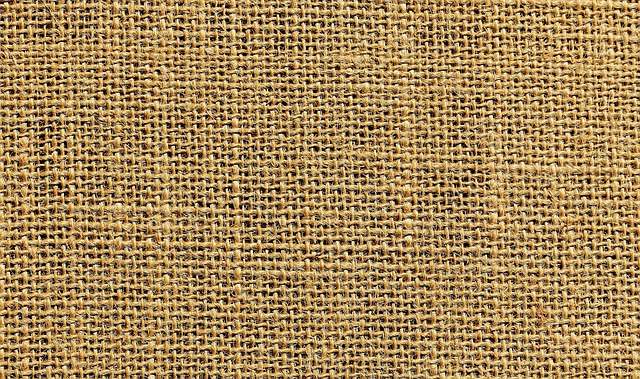Table of Contents
Introduction.
According to the official data from the Ministry of Textiles, Government of India, the country produced approximately 1.5 million metric tons of jute in the year 2022-23.
This makes India the largest producer of jute in the world. The data also reveals that India exported around 1.2 million metric tons of jute during the same period.
These statistics showcase the significant contribution of India to the global jute industry as both a major producer and exporter of this versatile fiber.
This blog on the Uses of Jute would interpret the massive statistics on the production of Jute and its consumption. I am trying to give Jute which is a natural fabric similar to cotton a true depth as to how this fabric could be consumed.
I am a South Indian from Chennai, and I started in the apparel and textile field in 1997, specializing in the manufacture of cotton products. I am still giving my full potential to this industry.
Being a third-generation textile entrepreneur And I believe there is never an end to learning. And learning is never complete unless implemented. And I strive to do that throughout my life. A detailed Introduction to me will be available on my about us page.
Did you know that jute, a natural fiber derived from plants, is not only strong and durable but also incredibly versatile? This sustainable material has found its way into numerous industries, offering a wide range of applications. From textiles to construction, jute has become a go-to choice for those seeking eco-friendly solutions.
Jute fabric, a versatile textile fiber known for its strength and durability, can be transformed into various products such as jute cottage bags or even jute bag shirts. The use of jute twine and strong threads made from corchorus capsular wood fiber has been prevalent for centuries. With its diverse types and uses, jute continues to make a significant impact in today’s world.
So why choose jute fibers? Not only does this textile fiber provide a sustainable alternative to synthetic materials, but it also offers excellent biodegradability.
Its versatility makes it an ideal choice for creating sturdy yet eco-conscious products, whether you’re looking for fashion items or construction materials. Consider harnessing the power of this remarkable plant-based resource – jute – with the guidance of a textile consultant!
How to Make Jute Fabric and Types of Jute Fabric

Jute fabric, made from spinning jute fibers into yarns and weaving them together, is a versatile material used in various industries. This durable and eco-friendly fabric has gained popularity in furniture production. Let’s delve into the fascinating world of jute production and explore the different types of jute fabric made from jute leaves.
Making Jute Fabric
The production of jute fabric begins with the extraction of fibers from the jute plant leaves. After harvesting, the plants are retted to separate the fibers from the stalks.
The extracted fibers are then washed, dried, and sorted based on their quality. This process is crucial for producing high-quality jute fabric used in furniture manufacturing.
Jute fabric is widely recognized for its durability and sustainability, making it a popular choice for eco-friendly furniture. Taking a class on jute fabric production can provide valuable insights into the intricate process of creating this versatile material.
Once sorted, these long, shiny jute fibers are spun into yarns using traditional spinning techniques or modern machinery. The resulting yarns can be further processed to enhance their strength and texture.
Jute fibers are commonly used in the production of furniture, as they provide durability and a natural look. The leaves of the jute plant are harvested and processed to extract the fibers, which are then used in various industries. Jute is also often used in the creation of class materials, such as mats and rugs.
To create jute fabric, these fibers are woven together using different weaving patterns. The most common method is plain weave, where each weft thread passes over one warp thread and under the next. This simple yet effective technique produces a strong and sturdy fabric suitable for numerous applications in furniture.
Types of Jute Fabric
Jute fabric, made from natural fibers, comes in various forms, each with its own unique characteristics that make it suitable for specific uses, such as furniture.

- Hessian Cloth: Also known as burlap or gunny cloth, hessian is a coarse woven fabric made from jute fibers. It has an open weave structure that allows air circulation while maintaining good tensile strength. Hessian cloth finds extensive use in packaging materials like sacks for agricultural products due to its breathability and durability.
- Burlap, also known as jute fabric, is a loosely-woven material made from natural fibers. It has a rough texture and is commonly used in gardening for ground covers and tree wraps to protect plants from harsh weather conditions. In addition, burlap bags have gained popularity for crafting and rustic-themed decorations.
- Twill Weave: Jute fabric, known for its natural fibers, is produced using a twill weave pattern. This distinctive diagonal ribbed texture enhances the fabric’s strength and drapability, making it suitable for upholstery, curtains, and various home decor items.
- Jute Canvas: Jute canvas is a heavy-duty jute fabric that offers excellent durability and resistance to wear and tear. It is commonly used in the manufacturing of bags, shoes, belts, and other accessories that require robust fibers.
- Jute Geotextiles: Geotextiles made from jute fibers are widely employed in civil engineering projects for erosion control, soil stabilization, and slope protection. Their biodegradable nature makes them an environmentally friendly alternative to synthetic geotextiles.
Features and Properties of Jute Fiber
Jute fiber, also known as the “golden fiber,” is one of the most important vegetable fibers, known for its various characteristics and properties. Let’s explore why jute fibers have gained popularity in different industries and how their unique features make them versatile materials.
Biodegradable and Environmentally Friendly
One of the key advantages of jute fibers is their biodegradability, making them an environmentally friendly choice. As natural fibers derived from plants, jute decomposes easily without causing harm to the environment. This characteristic sets jute apart from synthetic fibers which can take hundreds of years to break down.
Excellent Breathability and Moisture Absorption Properties
Jute fibers possess exceptional breathability, allowing air circulation through fabrics made from this material. This feature makes jute ideal for applications where ventilation is crucial, such as in clothing or upholstery.
Jute has excellent moisture absorption properties, which help to keep the skin dry by wicking away sweat and preventing odors. Additionally, these fibers are highly durable and sustainable.
Ideal for Blending with Other Materials
The long and soft fibers of jute make it an excellent candidate for blending with other materials. By combining jute with different textiles or synthetic fibers, manufacturers can enhance the overall quality and performance of their products.
Jute blends offer improved strength, durability, and aesthetic appeal while maintaining the eco-friendly aspect associated with natural fibers.
Versatile Applications in Various Industries
Jute’s unique properties, particularly its strong and durable fibers, have made it a highly sought-after material in numerous industries.
- Textiles: Jute fibers, which are known for their high tensile strength, are commonly used in textile manufacturing. Fabrics made from jute are durable and sturdy, making them a popular choice in the industry. Additionally, these fabrics retain a comfortable feel, making them a versatile option for various applications.
- Packaging: The strength of jute fibers makes it an ideal material for packaging purposes. It is often used in sacks and bags for storing grains, coffee beans, potatoes, or even construction materials.
- Carpets and Rugs: Jute’s soft texture and natural appearance make it a popular choice for carpets and rugs. The fibers add warmth and elegance to any space.
- Handicrafts: Jute fibers are extensively used in the creation of jute handicrafts, including jute wall hangings, jute baskets, and jute decorative items. The versatility of jute fibers allows artisans to showcase their creativity while promoting sustainable practices with jute.
- Agriculture: Jute fibres are also utilized in agricultural applications such as erosion control mats and soil covering. Its biodegradable nature makes it an excellent option for protecting soil from erosion while allowing plants to grow.
Jute Products: 5 Things Made from Jute
Jute, a versatile and eco-friendly natural fiber, has gained popularity for its various uses in the manufacturing industry. From bags to rugs, rope to paper, and even footwear options, jute products have become a go-to choice for those seeking sustainable alternatives. Let’s explore five amazing things that can be made from jute fibers.
Bags

Jute bags, made from natural fibers, have gained popularity among environmentally conscious individuals. These durable bags offer a sustainable alternative to plastic or synthetic fabric bags.
The natural texture of jute fabric adds an earthy touch to the overall design, making them both practical and stylish. Jute bags, including tote bags, shopping bags, and backpacks, are widely used for their eco-friendliness and versatility.
Rugs
Jute rugs are an excellent choice for their tightly woven jute fibers. These durable and long-lasting rugs bring an organic feel to any room with their natural golden hue and distinct texture. Perfect for indoor and outdoor use, jute rugs are resistant to wear and tear.
Rope
Jute rope, made from natural fibers, is renowned for its strength and versatility in various applications. Its durability makes it ideal for heavy-duty tasks such as gardening or packaging.
Gardeners often rely on a jute rope, a biodegradable fiber, for tying plants or creating trellises due to its gentle touch on delicate stems. In packaging industries, this robust rope made from fibers finds utility in securing boxes or parcels without causing damage.
Paper
The production of stationery items like notebooks or greeting cards has found a sustainable ally in jute paper. Made from processed jute fiber pulp, this type of paper offers a unique texture that sets it apart from regular paper.
Jutepaper provides an eco-friendly alternative to traditional paper, reducing the reliance on trees for pulp production. It’s natural appeal and earthy charm make it a preferred choice for those seeking distinctive stationery options with fibers.
Shoes
In the quest for eco-friendly footwear options, jute fibers have emerged as a key component in manufacturing shoes. Jute is often blended with other materials to create comfortable and sustainable footwear alternatives.
From jute fabric used in the upper part of the shoe to the sole made from natural rubber, these shoes offer a greener alternative without compromising on style or comfort. Jute-based shoes are not only fashionable but also contribute towards reducing environmental impact.
Jute fibers have revolutionized various industries by offering sustainable alternatives that align with our collective responsibility towards the environment.
Whether it’s jute bags, jute rugs, jute rope, jute paper, or even jute footwear options, jute continues to demonstrate its versatility and eco-friendliness across different applications. By embracing jute products, we can actively contribute to a greener and more sustainable future.
Jute, a versatile natural fiber, has various uses. It is commonly used to make jute fabric, bags, rugs, rope, paper, and shoes. Jute fibers are eco-friendly and sustainable.
Fashion and Textiles: Sustainable Applications of Jute

Jute fabric has become increasingly popular in the fashion industry due to its natural look and breathability. The use of jute clothing, such as dresses and garments, is gaining momentum as people appreciate the eco-friendly qualities it offers.
Jute fibers can be blended with other materials like cotton or linen to add strength and texture to fabrics. This blending technique allows for the creation of unique textiles that combine the best properties of both jute and other fibers.
For example, jute t-shirts are becoming a trendy choice for those seeking sustainable fashion options. The blend of jute fibers with cotton creates a comfortable yet durable material that is perfect for everyday wear.
Sustainable fashion brands have recognized the potential of jute fabric for clothing and are embracing it to create environmentally friendly garments.
These brands understand the importance of using natural fibers rather than synthetic ones, which often have a negative impact on the environment during their manufacture and disposal.
One way in which jute is being utilized in sustainable fashion is through the production of jute jackets. These jackets not only provide warmth but also showcase the unique texture that jute brings to clothing. The combination of jute fibers with other materials creates a stylish outerwear option that is both fashionable and eco-friendly.
In addition to jackets, jute pants have also gained popularity among those looking for sustainable fashion choices. Jute pants offer a comfortable fit while maintaining durability, making them suitable for various occasions.
Whether it’s a casual outing or a formal event, jute pants provide an excellent alternative to conventional synthetic fiber options.
The versatility of jute fabric extends beyond clothing items alone. It can also be used in various textile applications such as geotextiles, hessian cloth, and more. As a textile consultant would attest, these applications demonstrate how jute can be incorporated into different industries beyond just fashion.
The use of natural fibers like jute in the textile industry promotes sustainability by reducing reliance on synthetic fibers. Jute cloth, with its unique properties, offers a viable alternative to conventional materials. Its strength and durability make it suitable for a wide range of applications, ensuring that it can withstand the demands of everyday use.
Eco-Friendly Packaging Solutions with Jute
Jute, a versatile natural fiber derived from the plant materials cellulose and lignin, has gained popularity as an eco-friendly alternative to traditional packaging materials like plastic.
Its biodegradability and minimal environmental impact make it an ideal choice for businesses looking to reduce their carbon footprint. Let’s explore some of the uses of jute in eco-friendly packaging solutions.
Biodegradable and Sustainable
Jute packaging stands out due to its biodegradable nature, which makes it a sustainable option compared to non-biodegradable alternatives like plastic.
Plastic takes centuries to decompose, posing a significant threat to the environment. In contrast, jute bags and pouches can easily break down within a few months, ensuring minimal harm to natural vegetation and water bodies.
Packing Agricultural Products
Jute bags have long been used for packing various agricultural products due to their durability and strength. These bags are particularly suitable for carrying heavy items such as grains, pulses, fruits, and vegetables.
The sturdy construction of jute bags ensures that they can withstand the weight without tearing or compromising the product’s quality.
Coffee Beans and More
In addition to agricultural products, jute finds extensive use in packing coffee beans. The breathable nature of jute fabric allows proper air circulation while retaining the aroma and freshness of coffee beans.
This makes it an excellent choice for coffee producers who want to ensure their product reaches consumers in optimal condition.
Moreover, jute is also utilized in packaging other goods such as clothing items like jute cottage bags or even innovative products like “jute bag shirts.” These unique applications demonstrate the versatility of jute as a packaging material across different industries.
Reusability and Minimal Environmental Impact
Eco-conscious businesses opt for jute packaging not only because it is biodegradable but also due to its reusability factor. Jute bags can be used multiple times, reducing the need for single-use packaging materials. This not only saves costs but also minimizes environmental waste.
Furthermore, the production of jute itself has a minimal environmental impact. Jute plants require less water compared to other crops, making them a sustainable choice in regions with water scarcity.
Jute cultivation helps improve soil fertility and reduces the carbon footprint by absorbing carbon dioxide during its growth cycle.
Enhancing Home Decor with Versatile Jute Products
Jute, a natural and rustic material, offers a wide range of uses in home decor. From rugs and curtains to cushions and wall hangings, jute products can add a touch of elegance and textural interest to any room. Let’s explore the various ways you can enhance your home decor using these versatile jute products.
Jute Rugs, Curtains, and Cushions: Adding Natural Charm
Jute rugs, curtains, and cushions are excellent choices. These products not only provide functionality but also bring a natural and rustic look to your interiors.
Jute rugs are available in various sizes and designs, making them suitable for different areas of your home. Whether you want to place one under your coffee table or use it as an area rug in your living room, jute rugs offer versatility that complements any furniture style.
Similarly, jute curtains can instantly transform the ambiance of a room by adding texture and depth. The earthy tones of jute blend well with different color schemes while imparting a cozy feel. You can pair them with sheer curtains for privacy or use them alone for a more minimalist look.
To complete the ensemble, consider incorporating jute cushions into your seating arrangements. Not only do they provide extra comfort but their unique texture adds visual interest to chairs or sofas. By combining these three elements – rugs, curtains, and cushions – you’ll achieve a cohesive design that brings nature indoors.
Decorative Jute Baskets and Storage Containers: Functionality Meets Elegance
In addition to their aesthetic appeal, decorative jute baskets and storage containers offer practical solutions for organizing your space while maintaining an elegant touch. These versatile products come in various shapes and sizes to suit different needs around the house.
Jute baskets are perfect for storing items such as blankets, toys, or magazines. They can be placed in living rooms, bedrooms, or even bathrooms to keep clutter at bay while adding a touch of natural charm. The woven texture of jute lends a unique visual appeal to these storage solutions.
For a more sophisticated look, consider using jute storage containers with lids. These can be used to store anything from seasonal clothing to household essentials like extra linens or cleaning supplies. With their sturdy construction and durability, jute containers offer both functionality and elegance.
Jute Wall Hangings and Lampshades: Textural Accents
To infuse your home with character and personality, consider incorporating jute wall hangings and lampshades into your decor.
Jute wall hangings come in various designs, ranging from intricate macrame patterns to simple woven panels. They can add an artistic touch to any room while creating a focal point on empty walls.
Lampshades made from jute provide a warm and ambient light that complements the natural tones of the material. Whether you choose a pendant lampshade for your dining area or a table lampshade for your bedside table, the textured surface of jute will diffuse light beautifully throughout the space.
Agriculture and Horticulture: Boosting Growth with Jute
Jute, a versatile natural fiber derived from the jute plant, has found numerous uses in various industries. One of its primary applications lies in agriculture and horticulture, where it plays a crucial role in boosting growth and ensuring the health of plants.
Supporting Plants with Jutenetting
Jute netting has become an indispensable tool for supporting plants in agriculture, horticulture, and landscaping. The strong and durable nature of jute fibers makes them ideal for constructing nets that provide essential support to growing crops.
Farmers and gardeners utilize jute netting to create trellises for climbing vegetables like beans, peas, and cucumbers. By giving these plants a sturdy framework to climb on, jute nets promote vertical growth while optimizing space utilization.
Erosion Control and Plant Nurseries
In the battle against soil erosion, biodegradable jute sacks have emerged as a sustainable solution. These sacks are filled with soil or organic matter and placed strategically to prevent erosion on slopes or areas prone to heavy rainfall. As they degrade over time, they contribute organic matter back into the soil, enriching it further.
Moreover, jute sacks find extensive use in plant nurseries. They serve as protective covers for young seedlings during transportation or transplantation.
The breathable nature of jute allows air circulation while shielding delicate roots from damage. This ensures that the transplanted seedlings adapt well to their new environment.
Weed Protection with Jutemats
Weeds can pose a significant threat to crop growth by competing for resources such as sunlight, water, and nutrients. To combat this issue effectively without harming desired crops, farmers employ jute mats as an eco-friendly weed control measure.
Jutemats act as natural barriers that suppress weed growth while allowing adequate nourishment for the desired plants. These mats are laid around young crops during their early growth stages, preventing weed seeds from germinating and establishing themselves. This saves farmers valuable time and effort that would otherwise be spent manually removing weeds.
The Jute Industry in South Asia
South Asia dominates the global market. Countries like Bangladesh and India are at the forefront of jute cultivation and processing. With favorable climatic conditions and a rich agricultural heritage, these nations have established thriving jute industries.
The jute industry not only provides employment opportunities but also contributes significantly to the economy of these countries. It supports thousands of farmers who cultivate jute plants, ensuring a sustainable supply chain for this versatile fiber.
Jute: Beyond Agriculture
Although primarily associated with agriculture and horticulture, jute has found applications beyond these sectors. Its strength, durability, and eco-friendly nature have made it an attractive material for various industries.
For instance, the aerospace industry utilizes lightweight jute cloth composites in manufacturing aircraft components. These composites offer excellent heat resistance properties while reducing overall weight, contributing to fuel efficiency.
Construction Projects: Utilizing Jute for Sustainability
Jute, a versatile natural fiber, has found a multitude of uses in various industries. In construction projects, jute products have gained popularity due to their durability and sustainability. Let’s explore some of the ways jute is being utilized in the construction industry.
Jute Fiberboards: An Insulation Material with Multiple Applications
Jutefiberboards are increasingly being used as insulation material in different construction applications. These boards offer excellent thermal insulation properties, making them ideal for walls, roofs, and floors. Their ability to regulate temperature helps reduce energy consumption by maintaining comfortable indoor conditions throughout the year.
Moreover, jute fiberboards possess sound-absorbing qualities that aid in noise reduction within buildings. This makes them particularly valuable for creating acoustic barriers between rooms or minimizing external noise pollution.
Geotextiles: Erosion Control and Slope Stabilization
Geotextiles made of jute are playing a crucial role in erosion control and slope stabilization on construction sites. These fabrics act as protective covers over soil surfaces, preventing erosion caused by wind or water runoff. By anchoring soil particles together, they enhance stability and prevent landslides or soil erosion during heavy rainfall or high winds.
Furthermore, jute geotextiles promote vegetation growth by retaining moisture and allowing water infiltration into the soil. This not only aids in preventing erosion but also supports sustainable landscaping practices.
Jute Ropes: Ideal for Marine Construction Projects
The high strength and durability of jute ropes make them an excellent choice for marine construction projects. Jute ropes have been used for centuries due to their resistance to saltwater corrosion and their ability to withstand harsh weather conditions.
From securing boats and ships to constructing docks and piers, jute ropes provide reliable support in maritime environments. Their natural buoyancy adds an extra layer of safety while handling heavy loads at sea.
In addition to these specific applications, jute is also being utilized in the construction industry through the development of jute composites.
These composite materials combine jute fibers with other substances to create stronger and more lightweight building components. The use of jute composites not only reduces the environmental impact but also improves energy efficiency during construction.
The versatility of jute products in construction projects showcases their potential for sustainable development. By incorporating jute fiberboards for insulation, geotextiles for erosion control, and ropes for marine construction, builders can contribute to a greener future while ensuring durability and reliability.
Conclusion: Exploring the Diverse Applications of Jute
Jute, a versatile natural fiber derived from the Corchorus plant, offers a multitude of applications across various industries.
From fashion and textiles to agriculture and construction projects, jute has proven to be an eco-friendly and sustainable choice. Its unique features and properties make it an ideal material for creating fabrics, products, packaging solutions, and enhancing home decor.
In the realm of fashion and textiles, jute’s sustainable applications have gained significant attention. It provides a durable yet breathable fabric that can be used for clothing, accessories, and upholstery. By incorporating jute into our wardrobes, we contribute to reducing the environmental impact caused by synthetic fibers.
Jute shines as a viable alternative. Its strength and durability make it suitable for bags, sacks, and even biodegradable packaging materials. By choosing jute-based packaging options over plastic or other non-biodegradable materials, we can actively participate in reducing waste pollution.
Jute also finds its place in enhancing home decor with its versatility. Whether through rugs, curtains, or furniture upholstery, jute adds a touch of natural elegance to any living space. Its neutral tones complement various interior design styles while promoting sustainability.
In the agricultural sector, jute plays a vital role in boosting growth. Jute fibers are used for erosion control mats that prevent soil erosion during heavy rainfall or irrigation processes. Jute sacks are commonly employed for storing agricultural produce due to their breathable nature.
Construction projects can benefit greatly from utilizing jute for sustainability purposes. Jute fiber-reinforced composites offer excellent strength-to-weight ratios and can be used in building materials like panels or boards. This not only reduces the reliance on traditional construction materials but also contributes to energy conservation during transportation.
To harness these diverse uses of jute effectively:
- Consider incorporating jute-based fashion and textile products into your wardrobe to support sustainable fashion choices.
- Opt for eco-friendly packaging solutions made from jute to reduce plastic waste and promote a greener environment.
- Explore jute-based home decor options to add a touch of natural elegance while supporting sustainability efforts.
- Encourage the use of jute in agriculture and horticulture practices to enhance growth and prevent soil erosion.
- Embrace jute as an alternative material in construction projects for sustainable building practices.
By embracing the diverse applications of jute, we can contribute to a more sustainable future while enjoying the benefits of this remarkable natural fiber.
If you find this article interesting and wish to collect more information for a project that you would like to start. Do drop a mail at [email protected] I will surely respond at the earliest.
FAQs
Is jute fabric suitable for clothing?
Jute fabric is suitable for clothing due to its durability, breathability, and eco-friendly nature. However, it is important to note that pure jute fabric may have a coarse texture, so it is often blended with other fibers like cotton or silk to improve comfort.
Can I recycle jute products?
Yes, most jute products are recyclable. Jute fibers can be repurposed into various items or composted as they are biodegradable. Recycling or reusing jute products helps reduce waste and supports sustainable practices.
Are there any specific care instructions for jute products?
To maintain the longevity of your jute products, it is recommended to avoid prolonged exposure to moisture or direct sunlight. Regular vacuuming or gentle brushing can help remove dust or debris from woven surfaces.
How does using jute benefit the environment?
Using jute benefits the environment in several ways. Jute plants absorb large amounts of carbon dioxide during their growth cycle, reducing greenhouse gas emissions. Being a renewable resource, cultivating and utilizing jute supports sustainable agricultural practices and reduces dependence on non-renewable materials.
Can I find affordable jute products in the market?
Yes, jute products are available in a wide range of prices, making them accessible to various budgets. From affordable jute bags and home decor items to high-end fashion pieces, there are options for everyone looking to incorporate jute into their lifestyle.
What is jute fabric made from?
Jute fabric is made from the fibers of the jute plant, a natural fiber that grows primarily in the Indian subcontinent and Bangladesh. The long, shiny fibers are extracted from the plant’s stem and spun into coarse, strong threads, which are then woven to create jute fabric.
What is jute silk fabric?
Jute silk fabric is a blend of jute fibers and silk fibers. It is a relatively new fabric that has been gaining popularity in recent years. Jute silk fabric combines the strength and durability of jute with the softness and luxuriousness of silk. It is often used to make clothing, home furnishings, and other textiles.
How to clean jute fabric sofa at home?
1. Vacuum the sofa regularly to remove dirt, dust, and debris. Use a soft-bristled brush attachment to avoid damaging the fabric.
2. Mix a solution of mild dish soap and water in a spray bottle. Test the solution in an inconspicuous area of the sofa first to make sure it doesn’t discolor the fabric.
3. Spray the solution onto the stained area and blot it with a clean, damp cloth. Do not rub the stain, as this could damage the fabric.
4. Let the area dry completely before using the sofa again.
How are jute fibres converted into fabric?
Jute fibers are converted into fabric in a few steps:
1. Harvesting: The jute plant is harvested when the stalks are mature.
2. Retting: The stalks are retted, which is a process of soaking them in water for several days. This process helps to loosen the fibers from the stalks.
3. Stripping: The fibers are stripped from the stalks by hand or machine.
4. Carding: The fibers are carded, which is a process of combing them to remove impurities and align them parallel to each other.
5. Spinning: The fibers are spun into yarn.
6. Weaving: The yarn is woven into fabric.
Jute fabric can be made in a variety of weights and textures, depending on the desired use. It is often used for making bags, sacks, and other household items. It is also used in the construction industry and for making furniture.



Pingback: A List Of Best Natural Fabrics Names & Qualities In Market